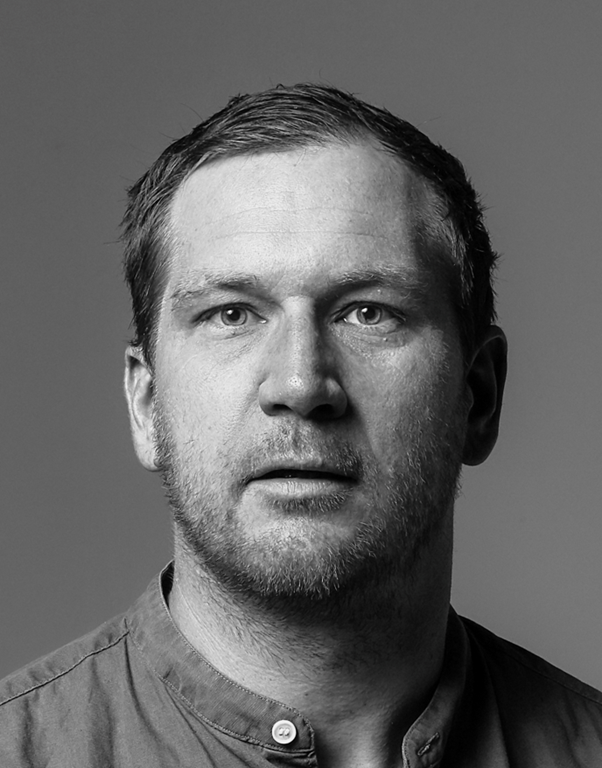In this interview, Chris Hofbauer, storytelling expert and lecturer of the Content Strategy course "Cross-Platform Storytelling“, gives insights into methods that help to create outstanding stories. He talks about the importance of storytelling in Content Strategy and how to sell ideas to decision-makers. His expertise will bring you one step closer to becoming a storytelling mastermind!
Since the beginning of mankind, people have loved stories. What’s the fascination behind it? Why do we love good stories so much?
Scientifically speaking, when we hear a story that resonates with us, our levels of a hormone called oxytocin increase. This "feel-good" hormone boosts our feelings of things like compassion, trust, and empathy. It motivates us to work with others and influences our social behavior. Because of this, stories have a unique ability to build connections. From my experience: a good story catches us, holds us tight, and lets us dream - which is even more of a counterpoint in our data- & fact-based world.
You teach the art of storytelling in the master’s program “Content Strategy”. Why do you think that storytelling is a must in content creation?
Users interact and consume content based on a clear added value for them. And one of the most important added values is inspiration and being entertained. People have become overwhelmed with companies trying to sell them something at every turn, but stories provide a way to cut through that noise, connect with us and communicate a message we’re more likely to hear. When we hear facts, it activates the data processing centers in our brains, but when we hear stories, it activates the sensory centers in our brains.
Good storytelling needs a hero, a conflict, a solution to a problem, and simple language - that's the theory. What would you say is in practice really important for a good story?
In short: creativity. Creativity is what adds something new, something unique to the audience. A new perspective on a subject, a funny plot twist, or a different way of using infographics can create massive attention compared to a more conservative approach. The most crucial test question for me would be: is the story so good that I wouldn't hesitate to call my best friend to tell him about it? Or can the story hold its own against cat videos on social media?
"A good story catches us, holds us tight and lets us dream."
The seven archetypal plots and trigger techniques are often used to create an outstanding storytelling campaign. Why do they work?
In the collective history of literature, theater, and film, seven story archetypes recur repeatedly. Referred to as “the seven basic plots” by the literary theorist Christopher Booker, these common archetypes have guided storytelling for countless generations. Why do they work? Because we are wired like that: archetypes take a crack at the human experience, what life means, and how we all live it in our different ways. Archetypes allow users to recognize their world or elements of their life in a story. They see themselves, what they could be, what they’ve been through, what they aspire to, how they want to live, what they want to do. They essentially get to explore their own world in a new way.
You were part of many successful storytelling projects. Especially your “Biedermann & die Brandstifter” campaign for Volkstheater in Vienna was complimented a lot by the media. How did you generate that idea and what techniques did you use?
To create awareness for the upcoming premiere of Biedermann & die Brandstifter (the arsonists) at Volkstheater Wien we wanted to create maximum attention in the city. To achieve this, we used the creative trigger of “take it literally” in the context of the archetype “Tragedy” to develop the story of the arsonist being really in Vienna for doing his mischief. We placed several burnt pieces (for example: a car or a grand piano). With the help of Social Media influencers and PR activities, we were soon the “talk of town” helping the Volkstheater Wien to sell tickets for the performances.
By what standards do you measure the success of a campaign?
I use pre-defined KPIs like awareness, interactions (likes/shares/comments), or leads depending on the goals of the campaign. Furthermore, I always try to achieve some sort of PR hype.

Instagram, Facebook, YouTube & Co: there are many channels to publish stories. What story types work on which channels and how do storytellers make an idea work across platforms?
My conclusion: if it’s an excellent piece of storytelling, the used channel is secondary. But of course, Facebook is well established to connect people with the same mindsets by using emotion-driven content, Instagram helps brands in the context of trends and lifestyle. Instagram is ALL about the visual by its very nature. Think visually stunning imagery. In contrast, Youtube is a search engine for learning and entertainment.
Good ideas alone are not enough, the decision-makers must also be convinced. How does one succeed in doing that and what are the most important DOs and DON'Ts?
Let's focus on the DOs: Executing strong ideas or insights can cause heavy tensions and fears for decision-makers. Understanding their fears is a good start when presenting unusual storytelling concepts. Making research a priority to understand the context of the communication challenge is also helpful in finding solid reasons why someone should “invest” in the idea. And last but not least, focusing on how to measure success will take away the concerns of the decision-makers.
"If it’s an excellent piece of storytelling, the used channel is secondary."
When the stories do not meet the companies' expectations, the result is dissatisfaction on both sides. What are the most common mistakes in storytelling?
A very common mistake in storytelling is to come up with the same predictable story everyone knows. If the story is known and does not catch the users' attention, people will swipe or scroll away. I see it so many times now on Social Media. "Copy & paste" is a quick way to generate something, but in the long term, such content is just damaging your brand.
Where is the journey in storytelling heading? What role will interactive content, virtual reality, and artificial intelligence play in the future?
My key takeaway: interactive content will be widely usable with 5G connections. Together with devices like the iPad or the iPhone which are technically ready for user-friendly AR, there will be a massive shift in the way the users will consume content.
About Chris Hofbauer #

Chris Hofbauer is an award-winning designer, creative director, and university lecturer with a focus on technology-driven playgrounds. In 2018 he started his own agency in the field of digital advertising and interactive brand experience. After his studies in Multimedia Art in Salzburg and Barcelona, he started his storytelling career as a motion designer in Amsterdam and worked for clients like Nike, Pepsi, and MTV. For eight years he worked as an art director for Red Bull, including four years in New York City as a creative team lead.
Where to go from here #
Read more about the master's program in Content Strategy on the website of FH Joanneum. Find more examples of Chris Hofbauer's projects on his website.
References #
Read more about the art of storytelling:
Booker, Christopher (2004). The Seven Basic Plots: Why We Tell Stories. Continuum.
Brockington, Guilherme (2021, June 1). Storytelling increases oxytocin and positive emotions and decreases cortisol and pain in hospitalized children. https://pubmed.ncbi.nlm.nih.gov/34031240/
Holmes, Bob. (2022, February 24). The chemical that sharpens our social skills. https://www.bbc.com/future/article/20220223-the-chemical-that-sharpens-our-social-skills
Miller, Donald (2017). Building a StoryBrand: Clarify Your Message So Customers Will Listen. HarperCollins Leadership.
Pricken, Mario (2005). Creative Advertising: Ideas and Techniques from the Worldś Best Campaigns. Thames & Hudson.
Walter, Ekaterina (2018). The Laws of Brand Storytelling. McGraw-Hill Education.
This article is a student-written interview with Chris Hofbauer as part of the course Cross-Platform Storytelling in the 2nd semester of the M.A. program in Content Strategy.

